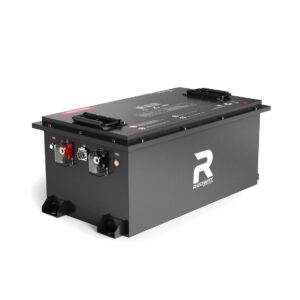How to Choose the Best Interstate Camper Battery for Your Needs?
Interstate camper batteries are deep-cycle batteries designed to power RVs, campers, and mobile living setups. They provide sustained energy for appliances, lighting, and electronics, using technologies like AGM, lithium-ion, or flooded lead-acid. These batteries prioritize durability, rechargeability, and capacity to handle off-grid demands while resisting vibration and temperature fluctuations common in travel scenarios.
What Types of Interstate Camper Batteries Are Available?
Interstate offers three primary camper battery types: AGM (Absorbent Glass Mat), lithium-ion, and flooded lead-acid. AGM batteries are maintenance-free and spill-proof, ideal for rough terrains. Lithium-ion variants provide higher energy density and faster charging, while flooded lead-acid models are cost-effective but require regular water refills and ventilation.

AGM batteries excel in scenarios where vibration resistance is critical, such as off-road camping or frequent travel on uneven roads. Their sealed design prevents acid leaks even when tilted at extreme angles. Lithium-ion options, though pricier upfront, offer significant weight savings—up to 60% lighter than comparable lead-acid batteries. This makes them ideal for roof-mounted solar setups or smaller trailers where weight distribution matters. Flooded lead-acid batteries remain popular for stationary RV setups due to their affordability, but users must commit to monthly maintenance checks.
| Battery Type | Cycle Life | Weight (lbs) | Maintenance |
|---|---|---|---|
| AGM | 500+ cycles | 60-80 | None |
| Lithium-ion | 3,000+ cycles | 25-40 | None |
| Flooded Lead-Acid | 300 cycles | 70-90 | Monthly |
What Factors Affect Camper Battery Lifespan?
Lifespan depends on discharge depth (keep above 50%), charging practices (use smart chargers), and temperature exposure (avoid below 32°F/0°C). Interstate’s lithium batteries last 3,000+ cycles when maintained at 20%-80% charge, while AGM versions typically endure 4-7 years with monthly voltage checks and terminal cleaning.
Discharge patterns dramatically impact longevity. Frequent deep discharges below 50% capacity can reduce AGM battery lifespan by 40%. Using compatible charging systems is crucial—lithium batteries require specialized chargers that prevent overvoltage, while lead-acid models need three-stage chargers to avoid sulfation. Temperature management is equally vital: Storing batteries in environments above 90°F (32°C) accelerates chemical degradation, potentially cutting lifespan by half. Interstate’s Battery Health Monitoring app helps users track these factors in real time, sending alerts when parameters fall outside optimal ranges.
How to Properly Maintain Your Camper Battery?
Perform monthly voltage tests (12.6V+ indicates full charge), clean terminals with baking soda solutions, and ensure tight connections. For flooded batteries, check electrolyte levels every 45 days. Store batteries at 50% charge in climate-controlled spaces during off-seasons. Interstate recommends equalizing charges every 60 days for lead-acid models to prevent sulfation.
Terminal maintenance is often overlooked but critical—corrosion can increase resistance by 30%, reducing effective capacity. Use dielectric grease after cleaning to prevent future oxidation. For winter storage, disconnect batteries completely and monitor charge levels monthly. Flooded battery users should invest in hydrometers to measure specific gravity, ensuring each cell maintains 1.265 SG when fully charged. Interstate’s Maintenance Kits include essential tools like terminal brushes, voltmeters, and electrolyte fill bottles for simplified upkeep.
“Interstate’s focus on adaptive BMS technology sets them apart,” says RV power systems analyst Mark Tolbert. “Their 2025 lithium line can recover from 0% charge without cell damage—a game-changer for boondocking enthusiasts. The real innovation is their hybrid charging compatibility, allowing simultaneous solar, alternator, and shore power inputs without voltage clash.”
FAQs
- Q: Can Interstate batteries power air conditioners?
- A: Yes—their 200Ah lithium model runs 13,500 BTU AC units for 4-6 hours on a single charge.
- Q: Are these batteries compatible with solar panels?
- A: All Interstate lithium and AGM batteries support solar charging via MPPT controllers.
- Q: How often should I replace my camper battery?
- A: Replace flooded lead-acid every 3-5 years, AGM every 6-8 years, and lithium every 10-15 years.
- Q: Do they require special charging equipment?
- A: Use Interstate’s SmartCharge XT for lithium (0-100% in 2.5 hours) or standard 3-stage chargers for AGM.
